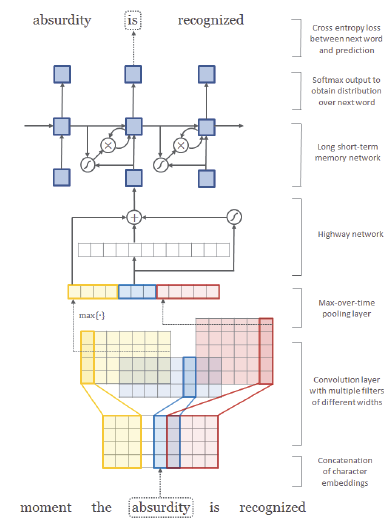Character-Aware Neural Language Models (Kim et al, 2016)
Overview:
-
Language model = finding a probability distribution over a sequence of words (traditionally estimated n-gram probabilities)
-
This model trains CNN + RNN to create language model based on character level embedding
-
Advantages of character level embedding:
-
No need for morphological tagging
-
Can embed morphological properties of an input language
-
Free from out-of-vocabulary issues
-
Key Results:

-
Architecture:
-
Embedding vector of each character is concatenated to form matrix representation of each word
-
Convolution with multiple filters, which essentially picking out n-grams of characters
-
Max-pooling to create a fixed dimensional word vector
-
Apply Highway Network to the word vector
-

-
Instead of complete non-linear transformation, it is a weighted non-linear transformation
-
Using additional affine transformation + non-linearity as "carry gate", this network adaptively carries some meaningful information of the input vector directy to the output vector.
-
-
LSTM to predict the subsequent word for the given input word (trained on cross entropy loss)
-
Comments:
-
While word embedding vectors focus on the contextual information of the input's surrounding words, this model relies on the context of each character within the word to generate word vectors.
-
In a way, it can create more isolated/localized embedding of a word that captures the internal structure or the morphological properties of a word (Representing words in different dimensional space)
-
No wonder combination of this localized embedding method with traditional word2vec like word embedding method shows improved performance in various NLP tasks